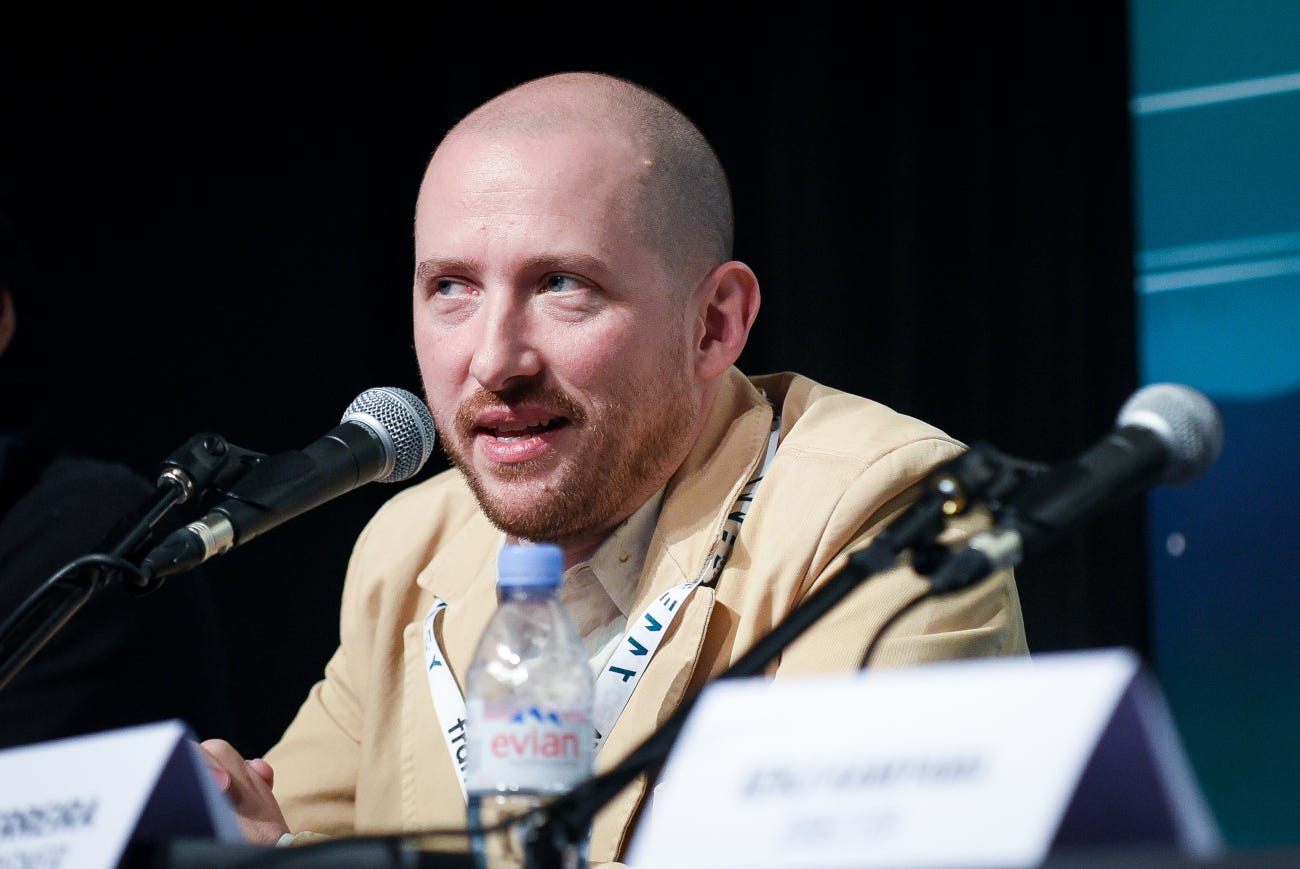Qubic Pictures refines anime co-productions
In part one of an interview with Animenomics, CEO Justin Leach charts his company's journey to find the right model for working with Japan's anime studios
This is a feature story from Animenomics, covering the business of anime and manga.

New York-based Qubic Pictures is pioneering new models of international anime co-productions, bringing Japanese studios’ production processes to the forefront of high-value productions like Star Wars: Visions and Leviathan.
Why it matters: Anime studios have long done animation service work for foreign clients, and the entry of global streaming video platforms into Japan—beginning with Netflix in 2015—prompted renewed interest in co-productions.
Qubic Pictures, a production management company was founded in 2018 and with multiple Netflix titles under its belt, has played a key role in ensuring the voices of anime studios and creators are heard in its co-productions.
What they’re saying: “Japan has this amazing history of making animation for decades, and they have a very well-established system,” chief executive officer Justin Leach told Animenomics in an interview. “We try to embrace all of that and make something that’s authentic and faithful to Japanese animation.”
“What we’re hoping is that if we can find the right formula and the right way to work together, we can expand the viewership of anime to a wider audience.” Leach explained.
Zoom in: Leach sees his company as an apparatus that can attach to any Japanese anime studio and facilitate communication with producers abroad.
Qubic Pictures provided Disney-owned Lucasfilm with cultural assistance and consulting when working with anime studios in Japan for the first and upcoming third season of Star Wars: Visions.
What’s next: “Lately, we have been trying a side-by-side approach: we respect the creators, we respect how Japan works, and we trust the way that they like to work,” Leach said in reference to his company’s latest project for Netflix, Leviathan, based on Scott Westerfeld’s award-winning young adult science fiction novel.
Qubic Pictures also has an upcoming project that brings in both western and Japanese talents to create a story together, Leach teased.
Go deeper: Read about Leach’s impressions of working with animator Shinya Ohira in the third season of Star Wars: Visions, plus part one of his full interview (for paying subscribers), below.
You were recently at the Annecy International Animation Film Festival, where you screened Shinya Ohira’s Black from Star Wars: Visions. How was the reception among the audience?
One of the things that makes that short stand out is the team of people that worked on it. They are considered legendary if you follow sakuga or are really into Japanese animation. For the people who were familiar with those animators, it was such a joy for them to see it. In the audience, I saw people who were gasping in disbelief.
There was sort of a palpable feeling after the screening completed at the opening ceremony where people were just processing and needed time to think about what they just saw. I think it had a very impactful premiere, and I was really happy to be able to witness that.
I know you have a strong personal interest in not just Star Wars, but also in Japanese animation. For you personally, what was special about Ohira’s work as an exhibition of Japanese animation at Annecy?
Ohira-san is someone that I’ve always looked up to as a creator. I worked on Kill Bill when I was at Production I.G many years ago and got to see some of his work there. He also worked on Innocence, another film that I worked on. I remember thinking to myself, “Who is this person? His work looks so different than everybody else’s.” He’s on this other plane of existence in terms of animation, creation, and the way that he uses expressive movement. It’s often very rough and not clean and refined, yet it evokes this feeling or emotion.
I’ll never forget the moment when David Production said, “We’re considering Shinya Ohira for this project.” I was like, “Oh my gosh, I’ve been a longtime fan.” I think he’s one of the national treasures of animation. I think most animators recognize this, and his work is truly exceptional. It was such an honor to be able to work with him and see the team that he assembled and all these legendary animators that I’ve been a fan of for a long time.
Did he say anything about being at Annecy and what it was like interacting with other animators?
Fans would come up to him all the time and say, “I love your work. I’m a huge fan.” I think it was an opportunity for him to meet some of those people that admire his work.
Even though Annecy is not a festival where people think of anime, it’s a very important one for animation. Masaaki Yuasa spent a lot of time there—he was there this year. There is a lot of Japanese presence, so Japan is a part of the community. From my experience, Annecy is the world’s best animation festival that brings all the animation lovers together in this magical city, so I think it’s really important for creators in Japan to participate and engage with the community at Annecy. Hopefully, they’ll return and start to develop a reputation within the festival like Yuasa-san has.
For Ohira-san, I think it was probably just a great way for him to see how his work is seen outside Japan and the type of impact it has on other people. I think he was able to experience that there.
Shinya Ohira’s Black will be exhibited for a second time at Anime NYC this month ahead of its October debut with Star Wars: Visions Volume 3.



